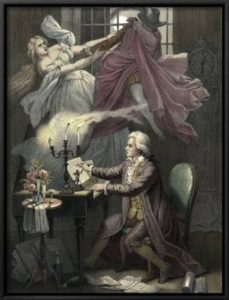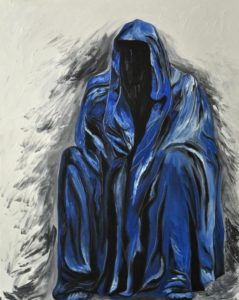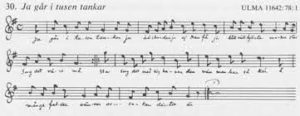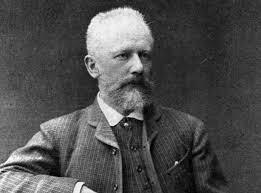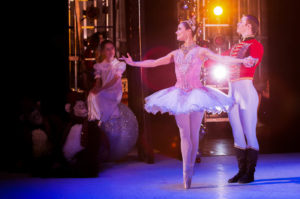In the late Fall of 1781, Wolfgang Amadeus Mozart was surprised in the late evening by a group of musicians who had gathered outside the window of his Vienna lodgings to play for him his Wind Serenade No. 11 in E flat major. Mozart was so caught off guard and delighted by what may have been the first musical flash mob that he wrote a letter to his father Leopold about the experience.
“At eleven o’clock last night” the composer writes “I was serenaded by two clarinets, two horns and two bassoons playing my own music. These musicians had the front gate opened for them, and when they had formed in the courtyard, they gave me, just as I was about to undress for bed, the most delightful surprise in the world with the opening E-flat chord.”
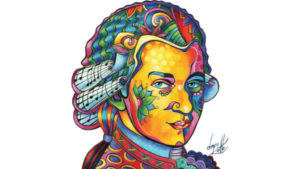 Originally composed in early 1781, Mozart’s Wind Serenade No. 11 in E flat major was first performed in Vienna on October 15 of that year. The six musicians who would later gather beneath Mozart’s window delivered the debut performance of the serenade at the Vienna home of court painter Joseph von Hickel. Correspondences between Mozart and his father reveal that the composer wrote Wind Serenade No. 11 “rather carefully”. The ambitious Mozart had hopes that his new musical offering might impress a regular guest of the von Hickels: Joseph von Strack. In addition to being the valet and personal cellist for then Emperor Joseph II of Austria, von Strack was in a perfect position to “pass along a favorable report” of Mozart’s music.
Originally composed in early 1781, Mozart’s Wind Serenade No. 11 in E flat major was first performed in Vienna on October 15 of that year. The six musicians who would later gather beneath Mozart’s window delivered the debut performance of the serenade at the Vienna home of court painter Joseph von Hickel. Correspondences between Mozart and his father reveal that the composer wrote Wind Serenade No. 11 “rather carefully”. The ambitious Mozart had hopes that his new musical offering might impress a regular guest of the von Hickels: Joseph von Strack. In addition to being the valet and personal cellist for then Emperor Joseph II of Austria, von Strack was in a perfect position to “pass along a favorable report” of Mozart’s music.
In the Serenade’s first completed draft, Mozart scored the piece for pairs of horns, clarinets, and bassoons. However, after learning that Emperor Joseph II had recently established a wind octet as his house band of choice, Mozart added two oboe parts to the score. Unfortunately for the composer, this revision was made in vain: Emperor Joseph II was far more interested in giving an audience to established popular music (ballet and opera suites) than newer works. Despite a brilliant first performance, von Strack left the home of Joseph von Hickel knowing that Mozart’s Wind Serenade No. 11 was not anything that the Emperor necessarily want or need to hear.
But networking difficulties aside, Mozart really struck gold by converting the wind sextet into an octet. The addition of the oboe section provides an earnest warmth that adds several dimensions to the piece. The Serenade is renowned by music historians today as being Mozart’s earliest masterpiece for wind ensemble and has the distinction of being the first great work of its kind by any composer. With five movements (Two framed Allegros and Minuets surrounding an Adagio), the piece is not unlike a deliciously layered trifle dessert.
The Serenade’s first movement, Allegro maestoso, opens with a solemn repeated chord E major chord. This chord is important, serving as an architectural pillar throughout the movement and returning at critical structural moments (such as during the recapitulation sections as well as the coda). The third movement, a grand Adagio, is framed by two minuets: the first of these a highly chromatic C minor, and the second full to the brim with the melodies of classic Austrian folksongs. The Adagio which serves as the center of the entire Serenade contains deeply expressive writing for its wind instruments, rich in character and operatic in its scope.
Richard Wagner later wrote that Mozart “inspired his instruments with the ardent breath of the human voice to which his genius was overwhelmingly inclined.” There are similarities between his writing for winds in the Adagio of Serenade No.11 and that of the quartet “Andro ramingo e solo,” found in his opera “Idomeneo”. Throughout both exemplary compositional works, the sheer dramatic potential of the wind instrument is elevated to a level that simply had not existed prior to Mozart’s musical efforts. In the Serenade’s Adagio movement, Mozart delivers to the winds a quartet of operatic dimensions. The Serenade’s finale is a breezy and soothing Allegro, and despite bringing forth an impressive fuge-like section consistently retains its lighthearted character. Despite von Strack leaving the party at the von Hickels without feeling the need to talk it up to his boss the Emperor, The premiere version of Mozart’s Wind Serenade No. 11 in E flat major was a raucous hit among partygoers. Mozart fondly recalled to his father via letter that the players reportedly performed his serenade two more times at other parties held later that same evening. “…As soon as they finished playing it in one place,” Mozart wrote, “they were taken off somewhere else and paid to play it.” You can hear your Saskatoon Symphony Orchestra bring this classic to life once more at our upcoming Mozart in Prague concert!


